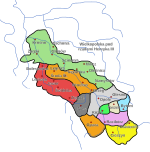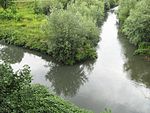Oświęcim Synagogue
1918 establishments in Poland20th-century religious buildings and structures in PolandAshkenazi Jewish culture in PolandAshkenazi synagoguesBuildings and structures in Lesser Poland Voivodeship ... and 10 more
History museums in PolandHolocaust locations in PolandHolocaust museumsJewish Polish historyMuseums in Lesser Poland VoivodeshipOrthodox synagogues in PolandOświęcimOświęcim CountySynagogues completed in 1918Synagogues preserved as museums

The Oświęcim Synagogue, also called the Auschwitz Synagogue, is the only active synagogue in the town of Oświęcim, Poland. The formal, as well as pre-war, name of the synagogue is Chevre Loymdei Mishnayos (English translation: Association of Those Who Study Mishna). It is now part of the Auschwitz Jewish Center, which includes a Jewish Museum, a cafe in the house of Shimson Kleuger and an education center.
Excerpt from the Wikipedia article Oświęcim Synagogue (License: CC BY-SA 3.0, Authors, Images).Oświęcim Synagogue
Zamkowa,
Geographical coordinates (GPS) Address Nearby Places Show on map
Geographical coordinates (GPS)
| Latitude | Longitude |
|---|---|
| N 50.040347 ° | E 19.220406 ° |
Address
Zamkowa 12
32-600
Lesser Poland Voivodeship, Poland
Open on Google Maps










